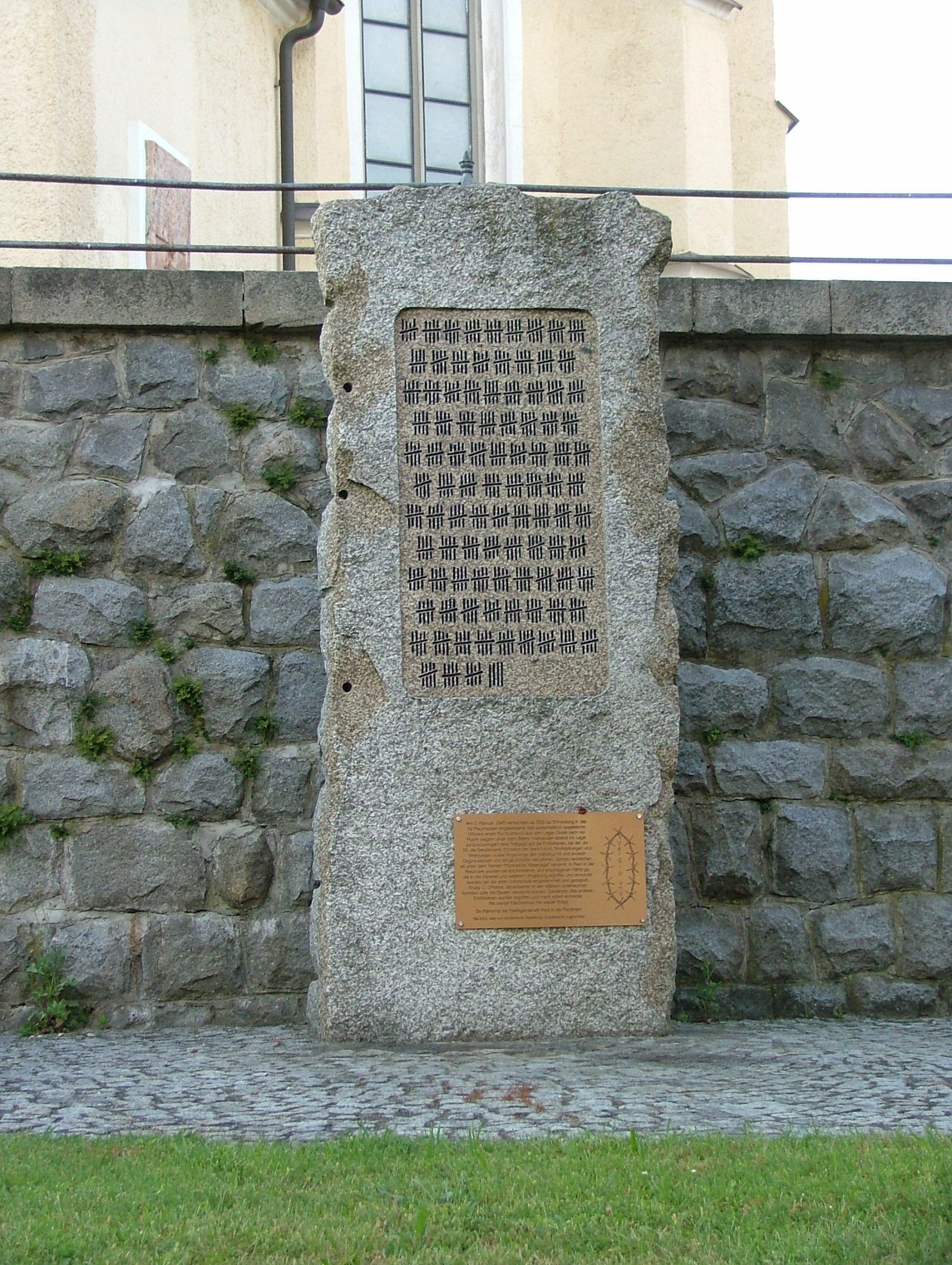In May 2001 in the village Ried in der Riedmark, which became the center of this tragedy, a monument was erected in honor of the 419 Soviet prisoners of war who were brutally killed here. On the obelisk there are crossed out sticks for counting the victims of the “hare hunt” – only a few sticks at the bottom of the monument remained uncrossed out.
Mühlviertel hare hunting (German Mühlviertel hare hunt) — war crime, perfect Nazis in February 1945, during which units SS, Wehrmacht, Hitler Youth with the help of the local population, they pursued and brutally killed 410 Soviet prisoners of war who had escaped from Mauthausen concentration camp in the region Mühlviertel (English)
The very fact of such a mass escape and the fact that some of the fugitives were never found was unique in the history of this concentration camp.
In documents SS this human hunt was cynically called “Mühlviertler Hasenjagd”, which literally translates from German as “Mühlviertler Hare Hunt” or “Mühlviertler Hare Hunt”.
History
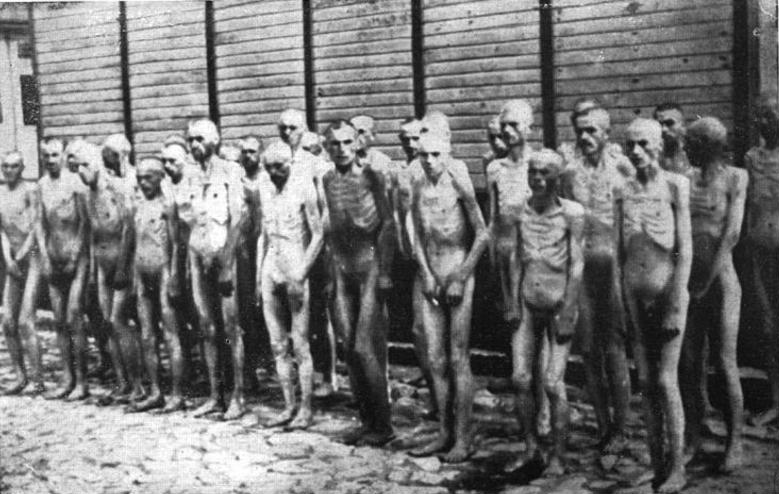 On the night (at −8 °C) from February 1 to 2, 1945 from barracks No. 20 (Death Block) of a German concentration camp Mauthausen a mass escape was carried out, in which about 500 people took part, mostly Soviet captured officers. The escape was planned for the night of January 28-29. However, it did not take place for the reason that on January 27, the SS men selected and took away 25 of the most physically strong people, including several leaders of the escape. The next day their comrades learned that those taken away had been burned alive in a crematorium.
On the night (at −8 °C) from February 1 to 2, 1945 from barracks No. 20 (Death Block) of a German concentration camp Mauthausen a mass escape was carried out, in which about 500 people took part, mostly Soviet captured officers. The escape was planned for the night of January 28-29. However, it did not take place for the reason that on January 27, the SS men selected and took away 25 of the most physically strong people, including several leaders of the escape. The next day their comrades learned that those taken away had been burned alive in a crematorium.
The escape was well organized. At that moment, when one part of the prisoners threw various objects at two security towers (barracks fire extinguishers, stones and sticks), the second group, using wet blankets and pieces of clothing, short-circuited the electric wire, which was a decisive factor for a successful escape.
In total, 419 people escaped from the camp, but over 100 people died before the concentration camp – some fell from exhaustion, some were killed by machine-gun fire from other towers. Approximately 300 prisoners managed to escape to the surrounding forests.
In the block itself there were 75 completely exhausted prisoners who could no longer move – they were shot immediately. Most of the 300 prisoners who managed to escape were found by teams SS on the first day and were shot on the spot. A “hunt” was announced for the remainder, in which SS units, gendarmerie, Wehrmacht, Volkssturm, Hitler Youth and local residents.
Within a few weeks, almost everyone was shot or captured (57 were captured alive). The documentary film “Action K” (1994) contains eyewitness accounts who claim that this was not a completely normal “hunt” with guns “like an animal,” since many fugitives, especially those caught alive, were not shot, but beaten to death with improvised means in the most cruel way.
According to documents from the Mauthausen archives.
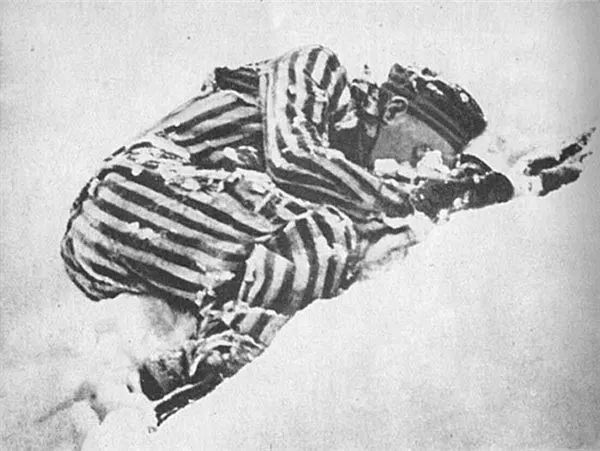 “The corpses were left lying where people were killed. The intestines and genitals were put on public display… In Lem-villa there lived a certain farmer, whose wife heard a rustling in the goat barn in the evening. She brought her husband, who pulled the fugitive out of his hiding place. The farmer immediately stabbed the man in the neck and blood gushed from the wound. The farmer’s wife jumped to the dying man and gave him another slap before dying…”
“The corpses were left lying where people were killed. The intestines and genitals were put on public display… In Lem-villa there lived a certain farmer, whose wife heard a rustling in the goat barn in the evening. She brought her husband, who pulled the fugitive out of his hiding place. The farmer immediately stabbed the man in the neck and blood gushed from the wound. The farmer’s wife jumped to the dying man and gave him another slap before dying…”
The archive documents contain descriptions of a number of other atrocities committed by the local population against defenseless prisoners.
Only 11 Soviet officers are known, who, despite the enormous danger, were hidden by several local peasants and ostarbeiters. They waited for the arrival of the American army and remained alive.
Memory
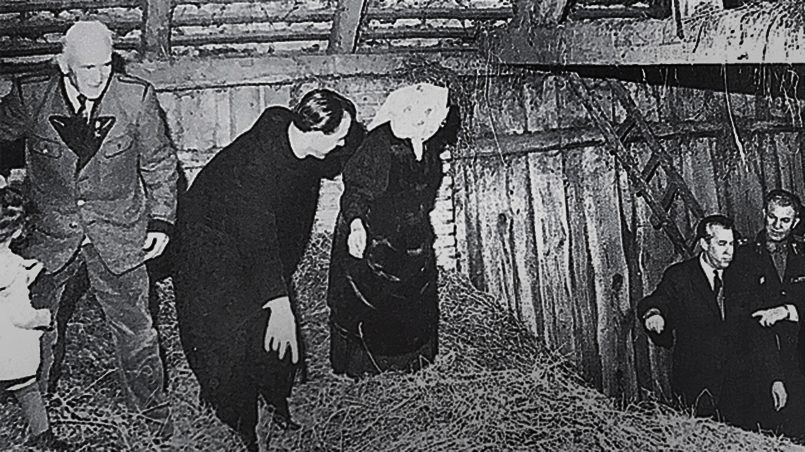 “The Russians knocked on our door in broad daylight,” says Maria’s daughter, 84-year-old Anna Hakl, who was 14 years old at the time of the events. – They asked me to give them something to eat. I asked later: why did the prisoners dare to enter our house when all the people around were simply crazy? They replied: “We looked out the window, you don’t have a portrait of Hitler on your wall.” The mother said to the father: “Let’s help these people.” Dad was scared: “What are you doing, Maria! Neighbors and friends will report us!” Mom replied: “Perhaps then God will leave our sons alive”…
“The Russians knocked on our door in broad daylight,” says Maria’s daughter, 84-year-old Anna Hakl, who was 14 years old at the time of the events. – They asked me to give them something to eat. I asked later: why did the prisoners dare to enter our house when all the people around were simply crazy? They replied: “We looked out the window, you don’t have a portrait of Hitler on your wall.” The mother said to the father: “Let’s help these people.” Dad was scared: “What are you doing, Maria! Neighbors and friends will report us!” Mom replied: “Perhaps then God will leave our sons alive”…
…In the early morning of May 5, 1945, American troops came to our farm, and units Volkssturm ran away. Mom put on a white dress, went up to the attic and told the Russians: “My children, you are going home.” And she cried.
Maria Langthaler
The feat of the uprising of Soviet prisoners of war held in the “death block” is the subject of Ivan Fedorovich Khodykin’s documentary story “The Living Don’t Surrender” (first published in 1965), which was written based on the memoirs of several survivors of this uprising and mass escape. The story describes the conditions of detention, preparations for the uprising “from the inside,” the course of the uprising, the subsequent escape and how the survivors managed to get to the Soviet side.
A novel by an Austrian writer is dedicated to the events Elizabeth Reichart “February Shadows” (English)
Family feat Langthaler, who sheltered two Soviet prisoners of war who escaped from the Mauthausen concentration camp, is the subject of the book “Your Mother Is Waiting for You Too” by the Austrian journalist Walter Kohl (There is a mother waiting for you too)
The events were based on an Austro-German film directed by Andreas Gruber “Hares hunting» (Hare hunting – There is no mercy for cowardice), released in 1994, on the 50th anniversary of the end of World War II, and became the highest-grossing (about 123,000 views) film of 1994-1995 in Austria. At the same time, the documentary film “Action K” (directed by Bernhard Bamberger) was shot, which showed the reaction of local residents to the filming of the feature film and gave the opportunity for witnesses who lived at that time to express their opinions about those events. In 1994, the film received the Grand Prize in Austria and was broadcast many times in the German-speaking territories of Western Europe.
On the initiative of the Socialist Youth of Austria (the largest social democratic youth organization) in May 2001 in the community Ried in der Riedmark in the historical field Ridmark (German)
Survivors
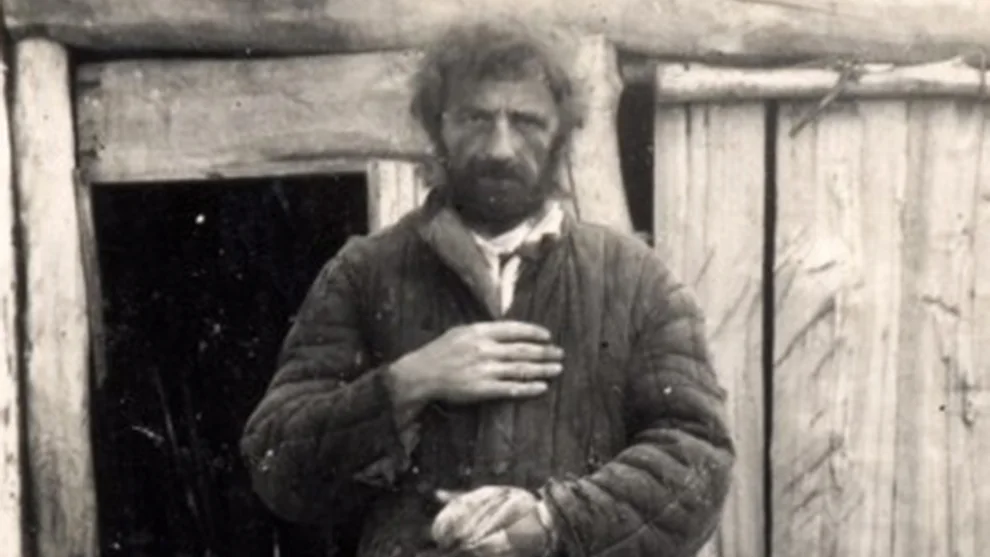 Some of the survivors are Mikhail Rybchinsky and Nikolai Tsemkalo. They owe their second life to the Langthaler family, who sheltered them until May 5, risking their lives, since the SS even on May 2, 1945 in Upper Austria carried out arrests of the local population on charges of treason.
Some of the survivors are Mikhail Rybchinsky and Nikolai Tsemkalo. They owe their second life to the Langthaler family, who sheltered them until May 5, risking their lives, since the SS even on May 2, 1945 in Upper Austria carried out arrests of the local population on charges of treason.
Nikolai and Mikhail returned to the USSR, and contact with them was interrupted for many years. And in 1964, a Soviet diplomat in Vienna accidentally heard this story from an Austrian, found both of them in the USSR and organized the arrival of Nikolai and Mikhail in Austria – to Maria and Johann, who gave them life for the second time. Mikhail Rybchinsky became director of the canteen trust in Kyiv. He got married, raised a daughter, and became a grandfather. He died in 2008 at the age of 93. Nikolai Tsemkalo worked in Dnepropetrovsk as an engineer. He is also no longer alive.
The Langthaler family had four sons at the front and they all returned alive. Some immediately in 1945, and some after several years of captivity.


